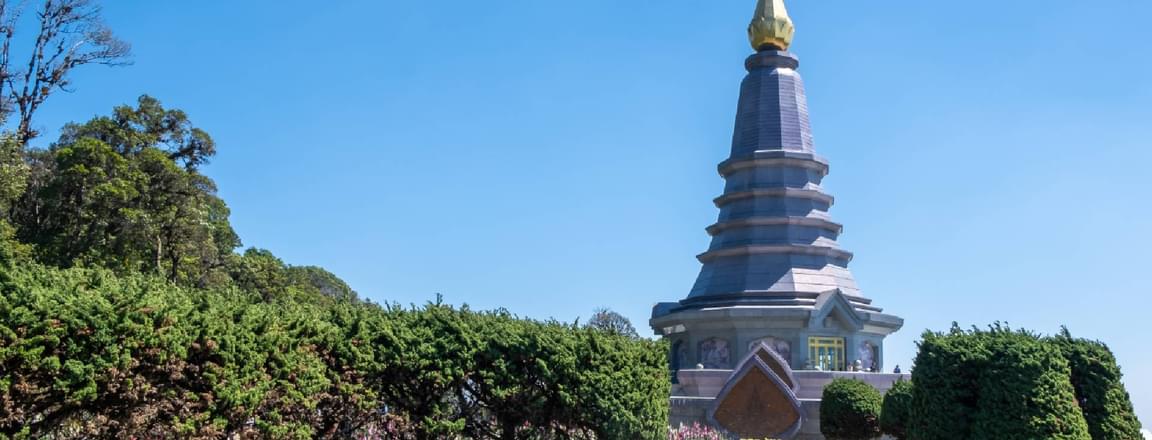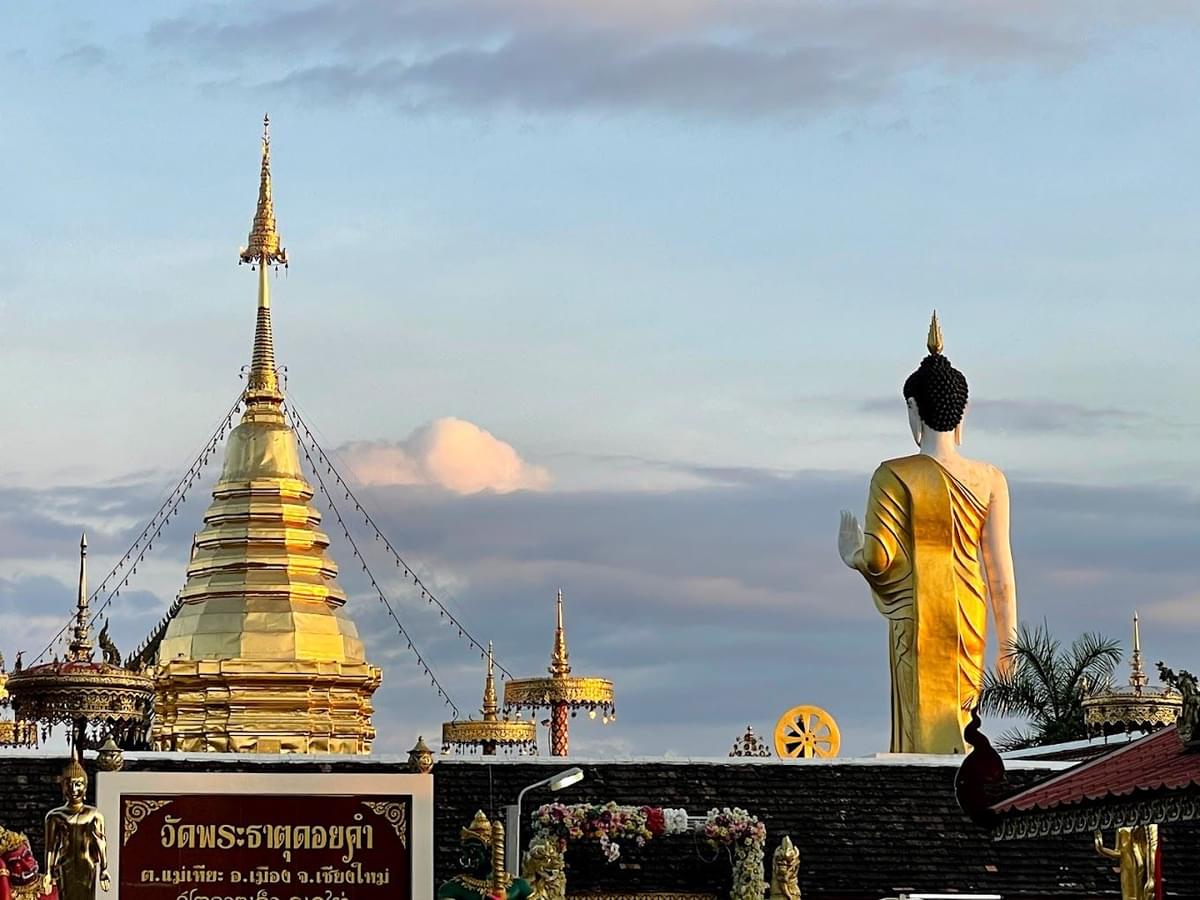
- Home
- Tourism
- Thailand
- Chiang Mai
- Best Time to Visit Chiang Mai
Best Time to Visit Chiang Mai

Chiang Mai is a great destination which one can visit throughout the year. But, choosing the best time to travel to Chiang Mai can enhance your travel experience. The perfect time to explore Chiang Mai city is between November and February. During these months, the weather is cool and very comfortable for outdoor activities, sightseeing tours and traditional festivals. In this guide, we have shared a detailed seasonal breakdown to help you plan your trip!
Key Takeaways
- November to February is Optimal: With cool, dry weather (15–28°C), this is the best season for temple visits, outdoor adventures, and major cultural festivals like Yi Peng and Loy Krathong.
- Each Season Has Unique Benefits: Summer is ideal for nature and waterfall exploration with fewer tourists, while the monsoon season brings lush greenery and more affordable travel.
- Year-Round Destination: No matter when you visit, Chiang Mai offers a mix of nature, culture, and history to suit different interests and budgets.
- Activity-Based Planning: Choose the season that best fits your goals: winter for outdoor activities and festivals, summer for quieter exploration, and rainy season for peaceful getaways and indoor experiences.
Chiang Mai's Weather & Seasons Overview

Chiang Mai experiences three distinct seasons, each offering a different travel experience depending on your weather tolerance, crowd preferences, and interests. Here’s a quick look at how temperatures shift throughout the year:
| Month | Season | Temperature Range |
| November to February | Winter | 15°C - 28°C |
| March to May | Summer | 25°C - 38°C |
| June to October | Monsoon | 22°C - 32°C |
November to February: Winter – Best Season to Visit Chiang Mai
This is the most popular time to visit Chiang Mai, with sunny days, low humidity, and ideal conditions for sightseeing, hiking, and enjoying festive events.
- What the weather is like: Clear skies, pleasant days, and cool nights. Daytime temperatures average around 25°C, with nights dropping to 15°C, especially in the hills.
- Average water temperature: Around 24–26°C in rivers and waterfalls, comfortable for light water activities.
- Best places to visit: Doi Suthep, Old City temples, Sunday Walking Street, Elephant Nature Park, and Doi Inthanon. Don’t miss the Yi Peng Lantern and Loy Krathong festivals in November.
- What to bring with you: Light, breathable clothes for daytime, a sweater or jacket for the evenings, and walking shoes for exploring temples and markets.
Koh Samui (2N)
Krabi (2N)
+2 Cities
- Adventurous and bumpy ride to Ko Tao and some water action during Ko Nangyuan snorkeling tour
March to May: Summer – Ideal for Exploring Chiang Mai’s Nature
Though hot, summer in Chiang Mai is a great time for visiting natural sites and enjoying cultural festivals with fewer tourists around.
- What the weather is like: Dry and very warm. Daytime highs often reach 35–38°C. Evenings stay above 25°C.
- Average water temperature: Warmer waters at 26–28°C, ideal for waterfall dips and river activities.
- Best places to visit: Sticky Waterfall (Bua Thong), Mae Sa Waterfall, Huay Tung Tao Lake, and local night markets. April is especially lively during the Songkran water festival.
- What to bring with you: Sunscreen, water bottles, lightweight clothes, hats, and sunglasses. Schedule outdoor activities early in the day or after sunset.
Chiang Mai (2N)
Bangkok (2N)
- Shop at a lower cost at the native works at Damnoen Saduak Floating Market
June to October: Monsoon – Budget-Friendly Travel Time
This is the greenest time of year in Chiang Mai, and while it rains frequently, it rarely lasts all day. Expect lower prices and fewer crowds.
- What the weather is like: Humid and rainy, especially in the afternoons. Temperatures range from 22°C at night to 32°C during the day.
- Average water temperature: Around 25–27°C, with rivers flowing strongly and waterfalls at full force.
- Best places to visit: Queen Sirikit Botanical Garden, mountain villages, local museums, and hillside cafes with misty views. Take advantage of the vibrant greenery for photography and nature walks.
- What to bring with you: Waterproof shoes, quick-dry clothes, umbrellas or raincoats, and a flexible itinerary in case of afternoon showers.
Chiang Mai (7N)
- Visit to the Doi Inthanon National Park Tour amidst waterfalls, ancient pagodas and treasures
How to Choose the Best Time to Visit Chiang Mai
Choosing the best time to visit Chiang Mai depends on what kind of experience you're after. If you prefer crisp mornings, sunny afternoons, and vibrant festivals, then the cool, dry season from November to February is ideal. This period offers the most comfortable weather for temple hopping, trekking, and attending major events like Yi Peng and Loy Krathong.
If you're more budget-conscious or want to avoid crowds, consider traveling in the hot season (March to May) or during the monsoon (June to October). The hot season lets you explore natural attractions like waterfalls, while the rainy season transforms the region into a lush green paradise perfect for quiet retreats and cultural exploration with fewer tourists around.
Pro Tips for Planning Your Chiang Mai Trip

To make your Chiang Mai adventure smooth and memorable, it’s helpful to plan around the city’s unique blend of cultural richness, seasonal weather, and local logistics.
Start by choosing your base wisely. Staying in the Old City gives you easy access to iconic temples like Wat Chedi Luang and the Sunday Night Market, ideal for first-timers or history lovers. Meanwhile, Nimmanhaemin (Nimman) offers a more modern, laid-back vibe with boutique cafés, co-working spaces, and nightlife popular with younger travellers and digital nomads.
Respecting local customs is key. When visiting temples, dress conservatively (cover shoulders and knees), and always remove your shoes before entering. Carrying a scarf or light shawl can help if you’re unsure about dress codes.
Because Chiang Mai is close to the mountains, the evenings, especially from November to February, can get surprisingly chilly. Pack a light jacket or layers, even if daytime temperatures seem warm. Expect even cooler nights if you're heading to areas like Doi Inthanon or Pai.
When getting around, red songthaews (shared pickup trucks) are the most affordable form of public transport. Just wave one down and confirm the price before hopping in. Tuk-tuks are quicker and more private, but a bit more expensive; always agree on a fare first.
Lastly, build in time for Chiang Mai’s rich cultural scene. Visit local craft villages, take part in Thai cooking classes, or attend traditional dance performances at cultural centres. If you’re visiting during festival season (like Yi Peng or Songkran), book activities well in advance and expect traffic delays and crowds.
Why Should You Book a Chiang Mai Trip with Pickyoutrail?
Planning a trip to Northern Thailand can be overwhelming with so many temples, villages, and nature spots to choose from. PickYourTrail’s local expertise makes your Chiang Mai vacation smooth, safe, and unforgettable. Whether you’re exploring ancient temples, meeting ethical elephant sanctuaries, or trekking through misty mountains, PickYourTrail crafts a tailored itinerary that fits your travel style.
They partner with trusted accommodations, responsible tour guides, and authentic cultural experiences, from cooking schools and artisan workshops to hill tribe visits, ensuring you enjoy Chiang Mai’s best with reliable service, great prices, and insider access to places most tourists miss.
Final Thoughts
Chiang Mai offers something unique in every season, from crisp winter festivals to lush monsoon retreats. The cool season (November to February) is the best time to go if you're seeking ideal weather for outdoor adventures, temple visits, and bustling festivals.
But don’t rule out the quieter, greener months of monsoon or the waterfall-friendly summer heat, especially if you value solitude or affordability. Your perfect trip depends on how you balance weather, culture, crowds, and cost.
FAQ's
What is the best month to visit Chiang Mai?
November is often considered the best month thanks to its dry, cool weather and the beautiful Yi Peng Lantern Festival.
How cold does Chiang Mai get during the winter season?
Temperatures can drop to around 15°C at night, especially in mountain areas. Days are usually mild and sunny at 25–28°C.
Is it worth visiting Chiang Mai during the hot summer?
Yes, especially if you enjoy fewer tourists and nature experiences like waterfalls. Just be sure to stay hydrated and avoid midday heat.
What should I pack for Chiang Mai in different seasons?
- Winter: Light clothes for the day, a jacket for the evening.
- Summer: Breathable fabrics, hats, sunglasses, and sunscreen.
- Monsoon: Waterproof shoes, umbrella or raincoat, quick-dry clothes.
How much do hotel prices vary between peak and off-peak seasons?
Accommodation prices can be 25–40% cheaper in the monsoon season compared to the peak season from November to February.
Which months have the lowest tourist crowds in Chiang Mai?
June to early October sees the fewest tourists, making it a great time for peaceful exploration and better travel deals.
Update your location?



